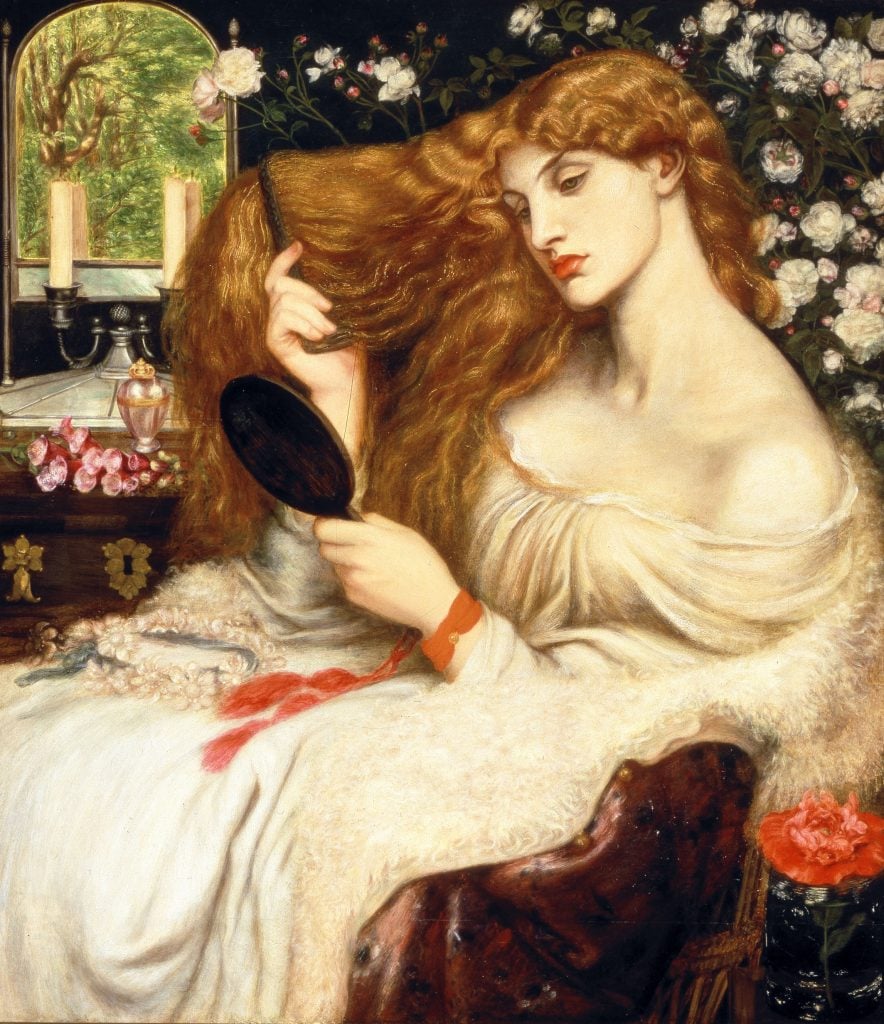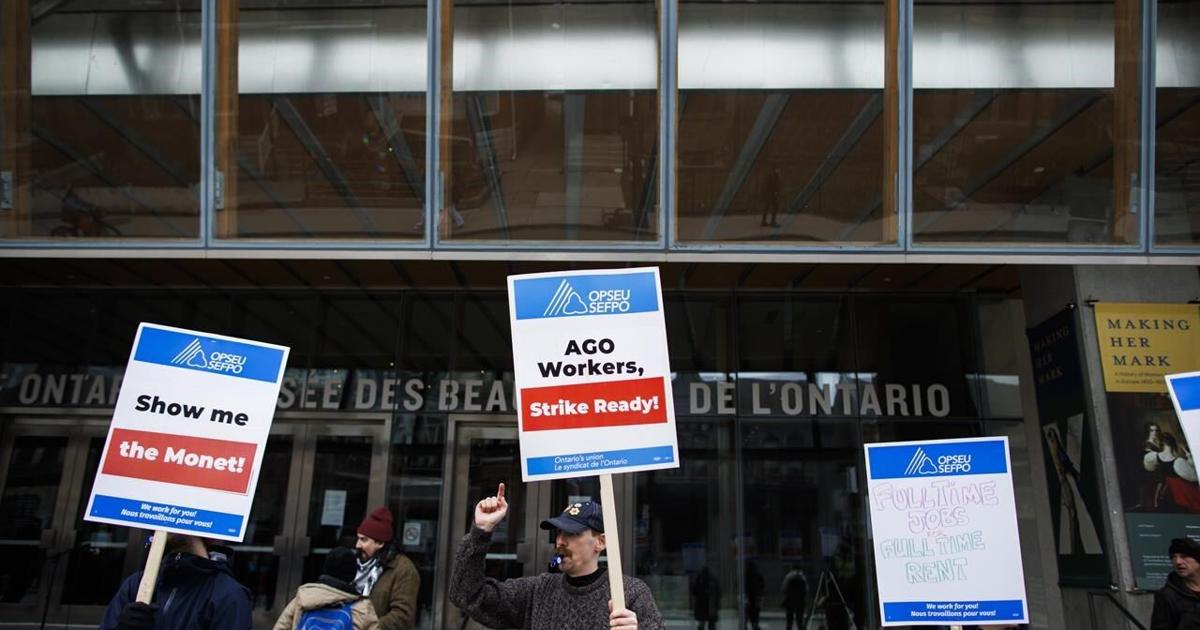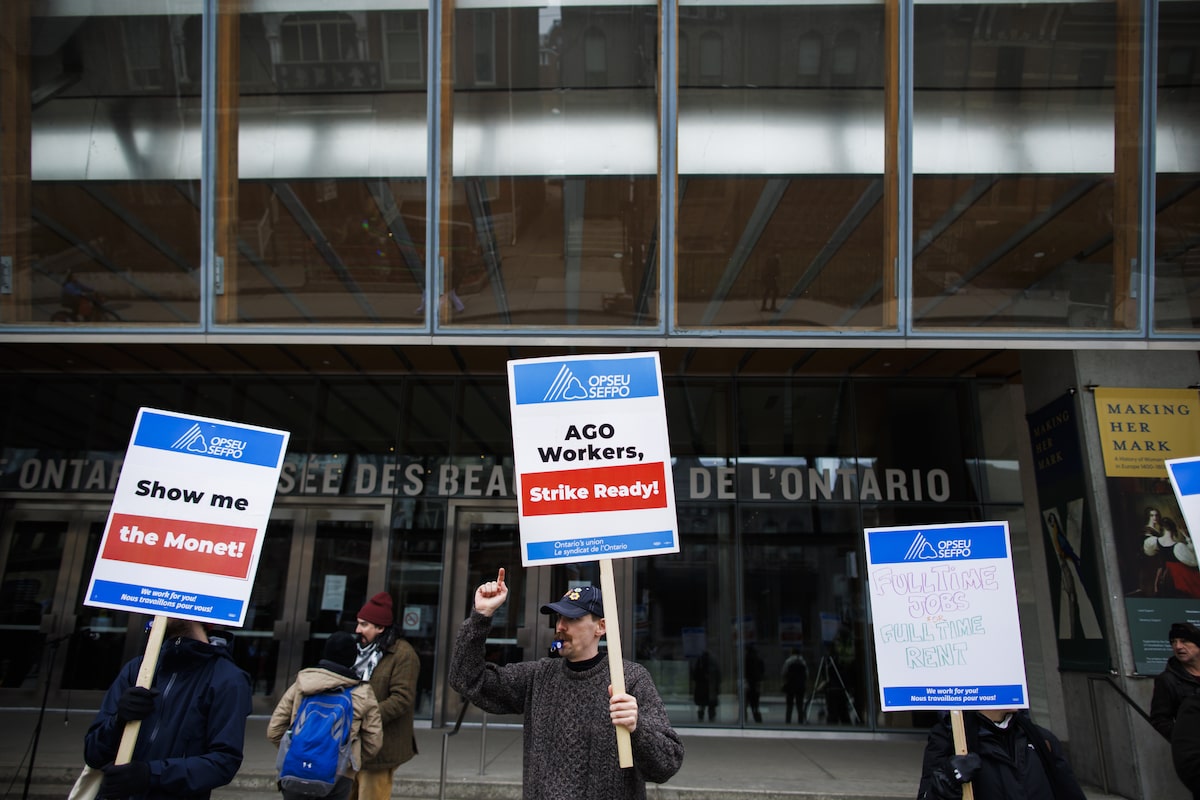Art
Coronavirus: Street art to inform residents on Vancouver’s Downtown Eastside – Global News

How do you communicate the severity of the COVID-19 pandemic to a community dealing with entrenched homelessness and drug addiction like the Downtown Eastside?
In the City of Vancouver’s case, the answer is partly through art.
The city has adapted its existing mural support program to help fund COVID-19-related murals to be painted on some of Vancouver’s growing number of boarded-up shop windows.
“It’s important because not everyone has internet,” said DTES community advocate Karen Ward, who wrote a message on one such mural near Hastings and Carrall streets.
That mural is a collaboration with well-known DTES street artist Smokey D, whose work has also helped communicate the toll of the overdose crisis.
The painting depicts a coughing figure and illustrations of the virus, along with advice to stay home, wash one’s hands 10 times a day, and avoid touching one’s face.
Not only do few people in the neighbourhood have internet access, said Ward, with bars and other gathering places closed down, they don’t have access to television either.
READ MORE:
‘It’s just not possible’: How can B.C.’s homeless self-isolate, sanitize amid coronavirus pandemic?
“People are hearing stuff on the street about this and that, and it’s and not always the most reliable information,” she said.
[ Sign up for our Health IQ newsletter for the latest coronavirus updates ]
“A largish public art piece like this communicates visually and really clearly, and it is talked about among people.”
Advocates for residents of the Downtown Eastside have repeatedly warned that an outbreak of COVID-19 in the neighbourhood would be “catastrophic.”
Handwashing facilities are limited in the area, and the city has struggled to get locals to comply with social- and physical-distancing measures.
Lisa Parker, the city’s branch manager of street activities, said the mural program will be active throughout the whole city, not just the DTES.
She said the initiative aims to both get the word out about the pandemic and help reduce graffiti on the city’s boarded-up storefronts.
“Giving information on distancing, and different information that is coming in from our health officials, and just really translating that into a 2D reminder to stay safe,” she said.
Other murals have expressed support for B.C.’s health-care workers, and provincial health officer Dr. Bonnie Henry and national public health officer Dr. Theresa Tam.

Vancouver has budgeted $15,000 for the program, and can provide up to $400 in paint. Would-be artists must have permission from the relevant property owners, tenant or business improvement association.
Artists must complete the work in two to three days, and maintain social and physical distancing while working.
The city is also asking property and business owners to pay artists for their work.
Businesses or artists who wish to participate can find out more at http://www.vancouver.ca/murals.
© 2020 Global News, a division of Corus Entertainment Inc.
Art
Art Bites: Millais's Muse Fell Ill After Posing for 'Ophelia' – artnet News
What’s the deal with Leonardo’s harpsichord-viola? Why were Impressionists obsessed with the color purple? Art Bites brings you a surprising fact, lesser-known anecdote, or curious event from art history. These delightful nuggets shed light on the lives of famed artists and decode their practices, while adding new layers of intrigue to celebrated masterpieces.
Beauty is pain. Elizabeth Siddal, one of art history’s most famous muses, had intimate experience with this adage. Siddal first met artist Walter Deverell in 1849, the year she turned 20, while working for a London milliner and soon became a favored model of the Pre-Raphaelite Brotherhood artists. She was featured in William Holman Hunt’s A Converted British Family Sheltering a Christian Missionary from the Persecution of the Druids (1849–50) and most famously in John Everett Millais’s Ophelia (1851–52). It was during her contribution to the latter painting, that she fell ill.
Beauty was a matter of pain for Millais, too. In a rare move for artists of the era, he spent five months painting scenery for Ophelia in a hut along Surrey’s Hogsmill River. “My martyrdom is more trying than any I have hitherto experienced,” Millais remarked, describing “muscular” flies and powerful winds. “The painting of a picture under such circumstances would be a greater punishment to a murderer than hanging.”
The Tate notes that Millais devoted only four months to portraying Ophelia herself. Siddal agreed to stand in for the doomed beauty. She spent long hours in a bathtub at the artist’s Gower Street studio, wearing a cheap gown Millais acquired. “Today I have purchased a really splendid lady’s ancient dress—all flowered over in silver embroidery,” he wrote. “It cost me, old and dirty as it is, four pounds.” The dress is still in the Tate.
Millais arranged oil lamps beneath Siddall’s tub to keep her bathwater warm. One of those lamps went out. Millais didn’t notice, and Siddal didn’t complain—by then she knew that beauty means pain. The water grew so frigid that Siddall fell ill with pneumonia. Siddall’s father ordered Millais to cover her extensive medical bills. The artist allegedly made off paying the least possible amount.


Siddal in Dante Gabriel Rossetti’s Lady Lilith (1866–68; 1872–73). Collection of the Delaware Art Museum.
Siddal made a full recovery from her Ophelia-induced illness, but the bout proved foreshadowing. Siddall likely met Pre-Raphaelite Brotherhood painter Dante Gabriel Rossetti while they both sat for Deverell’s massive oil painting Twelfth Night, Act II, Scene IV (1850). Siddall fell for Rossetti, who made her his sole model. In 1853, Rossetti took Siddall on as an art student. He taught her to draw, and advised her to drop the last letter from her surname. By 1857, Siddal became one of the only women to exhibit alongside the Pre-Raphaelites. Over the next 15 years, she produced numerous drawings, paintings, and poems, often inspired by Lord Tennyson, her favorite poet since discovering his verses on a butter wrapping as a kid.
As time wore on, Siddal grew fearful that her philandering beau would abandon her for a younger muse. While Rossetti resisted their marriage due to Siddal’s working class background, the two wed in 1860. It wasn’t enough to stave off her consumptive melancholy. Siddal died from a laudanum overdose, a rumored suicide, in 1862—decades before 1894, when Ophelia was included the original Henry Tate gift. It’s one of the museum’s most popular paintings today, due in no small part to Siddal’s sublime beauty, the pain it brought her.
Follow Artnet News on Facebook:
Want to stay ahead of the art world? Subscribe to our newsletter to get the breaking news, eye-opening interviews, and incisive critical takes that drive the conversation forward.
Art
Striking Art Gallery of Ontario workers reach tentative deal with museum – Toronto Star


/* OOVVUU Targeting */
const path = ‘/news/canada’;
const siteName = ‘thestar.com’;
let domain = ‘thestar.com’;
if (siteName === ‘thestar.com’)
domain = ‘thestar.com’;
else if (siteName === ‘niagarafallsreview.ca’)
domain = ‘niagara_falls_review’;
else if (siteName === ‘stcatharinesstandard.ca’)
domain = ‘st_catharines_standard’;
else if (siteName === ‘thepeterboroughexaminer.com’)
domain = ‘the_peterborough_examiner’;
else if (siteName === ‘therecord.com’)
domain = ‘the_record’;
else if (siteName === ‘thespec.com’)
domain = ‘the_spec’;
else if (siteName === ‘wellandtribune.ca’)
domain = ‘welland_tribune’;
else if (siteName === ‘bramptonguardian.com’)
domain = ‘brampton_guardian’;
else if (siteName === ‘caledonenterprise.com’)
domain = ‘caledon_enterprise’;
else if (siteName === ‘cambridgetimes.ca’)
domain = ‘cambridge_times’;
else if (siteName === ‘durhamregion.com’)
domain = ‘durham_region’;
else if (siteName === ‘guelphmercury.com’)
domain = ‘guelph_mercury’;
else if (siteName === ‘insidehalton.com’)
domain = ‘inside_halton’;
else if (siteName === ‘insideottawavalley.com’)
domain = ‘inside_ottawa_valley’;
else if (siteName === ‘mississauga.com’)
domain = ‘mississauga’;
else if (siteName === ‘muskokaregion.com’)
domain = ‘muskoka_region’;
else if (siteName === ‘newhamburgindependent.ca’)
domain = ‘new_hamburg_independent’;
else if (siteName === ‘niagarathisweek.com’)
domain = ‘niagara_this_week’;
else if (siteName === ‘northbaynipissing.com’)
domain = ‘north_bay_nipissing’;
else if (siteName === ‘northumberlandnews.com’)
domain = ‘northumberland_news’;
else if (siteName === ‘orangeville.com’)
domain = ‘orangeville’;
else if (siteName === ‘ourwindsor.ca’)
domain = ‘our_windsor’;
else if (siteName === ‘parrysound.com’)
domain = ‘parrysound’;
else if (siteName === ‘simcoe.com’)
domain = ‘simcoe’;
else if (siteName === ‘theifp.ca’)
domain = ‘the_ifp’;
else if (siteName === ‘waterloochronicle.ca’)
domain = ‘waterloo_chronicle’;
else if (siteName === ‘yorkregion.com’)
domain = ‘york_region’;
let sectionTag = ”;
try
if (domain === ‘thestar.com’ && path.indexOf(‘wires/’) = 0)
sectionTag = ‘/business’;
else if (path.indexOf(‘/autos’) >= 0)
sectionTag = ‘/autos’;
else if (path.indexOf(‘/entertainment’) >= 0)
sectionTag = ‘/entertainment’;
else if (path.indexOf(‘/life’) >= 0)
sectionTag = ‘/life’;
else if (path.indexOf(‘/news’) >= 0)
sectionTag = ‘/news’;
else if (path.indexOf(‘/politics’) >= 0)
sectionTag = ‘/politics’;
else if (path.indexOf(‘/sports’) >= 0)
sectionTag = ‘/sports’;
else if (path.indexOf(‘/opinion’) >= 0)
sectionTag = ‘/opinion’;
} catch (ex)
const descriptionUrl = ‘window.location.href’;
const vid = ‘mediainfo.reference_id’;
const cmsId = ‘2665777’;
let url = `https://pubads.g.doubleclick.net/gampad/ads?iu=/58580620/$domain/video/oovvuu$sectionTag&description_url=$descriptionUrl&vid=$vid&cmsid=$cmsId&tfcd=0&npa=0&sz=640×480&ad_rule=0&gdfp_req=1&output=vast&unviewed_position_start=1&env=vp&impl=s&correlator=`;
url = url.split(‘ ‘).join(”);
window.oovvuuReplacementAdServerURL = url;
TORONTO – The union representing hundreds of striking Art Gallery of Ontario workers says it’s reached a tentative deal with the museum.
The Ontario Public Service Employees Union says they reached the deal late last night, after 16 hours of bargaining.
function buildUserSwitchAccountsForm()
var form = document.getElementById(‘user-local-logout-form-switch-accounts’);
if (form) return;
// build form with javascript since having a form element here breaks the payment modal.
var switchForm = document.createElement(‘form’);
switchForm.setAttribute(‘id’,’user-local-logout-form-switch-accounts’);
switchForm.setAttribute(‘method’,’post’);
switchForm.setAttribute(‘action’,’https://www.thestar.com/tncms/auth/logout/?return=https://www.thestar.com/users/login/?referer_url=https%3A%2F%2Fwww.thestar.com%2Fnews%2Fcanada%2Fstriking-art-gallery-of-ontario-workers-reach-tentative-deal-with-museum%2Farticle_f93dfb4a-141d-5144-bb61-41d842fc7153.html’);
switchForm.setAttribute(‘style’,’display:none;’);
var refUrl = document.createElement(‘input’); //input element, text
refUrl.setAttribute(‘type’,’hidden’);
refUrl.setAttribute(‘name’,’referer_url’);
refUrl.setAttribute(‘value’,’https://www.thestar.com/news/canada/striking-art-gallery-of-ontario-workers-reach-tentative-deal-with-museum/article_f93dfb4a-141d-5144-bb61-41d842fc7153.html’);
var submit = document.createElement(‘input’);
submit.setAttribute(‘type’,’submit’);
submit.setAttribute(‘name’,’logout’);
submit.setAttribute(‘value’,’Logout’);
switchForm.appendChild(refUrl);
switchForm.appendChild(submit);
document.getElementsByTagName(‘body’)[0].appendChild(switchForm);
function handleUserSwitchAccounts()
window.sessionStorage.removeItem(‘bd-viafoura-oidc’); // clear viafoura JWT token
// logout user before sending them to login page via return url
document.getElementById(‘user-local-logout-form-switch-accounts’).submit();
return false;
buildUserSwitchAccountsForm();
console.log(‘=====> bRemoveLastParagraph: ‘,0);
Art
Striking Art Gallery of Ontario workers reach tentative deal with museum – The Globe and Mail


The union representing hundreds of striking Art Gallery of Ontario workers says it’s reached a tentative deal with the museum.
The Ontario Public Service Employees Union says they reached the deal late last night, after 16 hours of bargaining.
The downtown Toronto museum has been closed for a month while more than 400 workers represented by OPSEU – including assistant curators, archivists and food and hospitality staff – were on strike.
They walked off the job after rejecting an offer from the AGO, which the union said failed to address key issues such as wage increases, protections for part-time workers and contracting out positions.
The union didn’t share details about their new tentative deal, which will soon go to a vote among the members, and the AGO did not immediately respond to a request for comment.
No information was immediately available about when the AGO would reopen.
The union has previously said that part-time employees make up more than 60 per cent of the AGO’s work force, and they earn an average of $34,380 per year.
-
Media19 hours ago
B.C. online harms bill on hold after deal with social media firms
-
Media24 hours ago
Trump poised to clinch US$1.3-billion social media company stock award
-
Real eState20 hours ago
Montreal tenant forced to pay his landlord’s taxes offers advice to other renters
-



 Investment19 hours ago
Investment19 hours agoMOF: Govt to establish high-level facilitation platform to oversee potential, approved strategic investments
-



 Politics19 hours ago
Politics19 hours agoPolitics Briefing: Younger demographics not swayed by federal budget benefits targeted at them, poll indicates
-
News19 hours ago
Just bought a used car? There’s a chance it’s stolen, as thieves exploit weakness in vehicle registrations
-



 Science18 hours ago
Science18 hours agoGiant prehistoric salmon had tusk-like spikes used for defence, building nests: study
-



 Tech18 hours ago
Tech18 hours agoCalgary woman who neglected elderly father spared jail term





